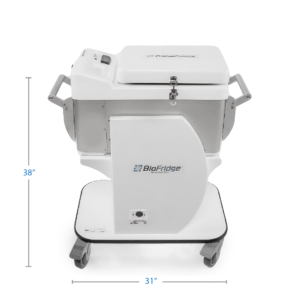Blood Storage During Disaster – How Does it Work?
Blood storage during disasters is an important part of emergency response. Disasters, whether natural or man-made, demand the availability of not just blood, but also emergency medical aid at the site of the disaster. The safe storage and transportation of blood is especially crucial in times when hospitals are overwhelmed by patients.
Storage of Blood
Blood storage is an integral part of emergency response because it allows for the safe collection and distribution of blood during emergencies. This includes disasters such as hurricanes, earthquakes, tornadoes, floods, and other natural disasters. In addition, blood storage also provides a means of storing blood for use in medical procedures after a disaster has occurred.
There are two main types of blood stored: whole blood and red blood cells (RBC). Whole blood is made up of plasma, white blood cells, and RBCs. It is used to treat patients who need immediate transfusions. Red blood cells are used to treat patients with anemia.
Blood can be stored up to 42 days after collection. It should be refrigerated immediately after donation. Once it has been collected, it must be processed within 24 hours. Most of the time, blood is broken down into its separate components for effective storage and usage according to requirement.
How Is Blood Stored?
Blood banks are usually located at hospitals and medical centers. Once collected from the donor, it is immediately transferred to special containers called bags. These bags contain anticoagulants (a substance that prevents clotting).
Temperature Stability:
Blood bags are then placed in a container such as a portable medical refrigerator that can maintain the FDA regulated temperature range of 1-6º Celsius. Maintenance of the required temperature will ensure that valuable resources such as blood and medications are not wasted due to temperature fluctuations during critical circumstances.
Portable refrigerators may also have an additional feature of notifying users in the event of temperature or external environmental fluctuations. This is especially helpful during disasters when users may not be able to constantly check the unit for inconsistencies.
Storage Time:
Power outages and electrical failures are common during disasters. Though electrical disturbances are an expected outcome of a disaster, they can damage sensitive medical components that require stable temperatures for storage.
Portable medical refrigerators serve as temporary storage units that can safely store blood for up to 22 hours depending upon the make and design. This is crucial during times of emergencies where healthcare providers may be unable to constantly charge the unit.
Physical Safety of Blood:
The challenging circumstances that disasters bring demand strong and durable containers for storage of blood and first aid medication. Manufactured using tough material like stainless steel, these units can withstand rough-handling as well as unpredictable environmental changes most likely to occur during disasters. Portable medical refrigerators need to be functional as well as sturdy. Many are designed to have wheels and easy to hold handles that make them travel-friendly and ‘portable’.
BioFridge’s refrigerators as well as freezers are one of the most dependable medical refrigerators you can opt for during such circumstances. Our portable refrigerators and freezers are packed with features such as UL listing, on-board power supply modules, alarm system notifying temperature fluctuations, durable build, downloadable temperature records, storage for charts and papers, internal fan for temperature stability and dual temperature options.
In order to know more about our portable refrigerators and freezers, and how they can help cater to your requirements, you can write to us at sales@biofridge.com. You can also speak to our representative by dialing 760-233-8847.
Sources:



